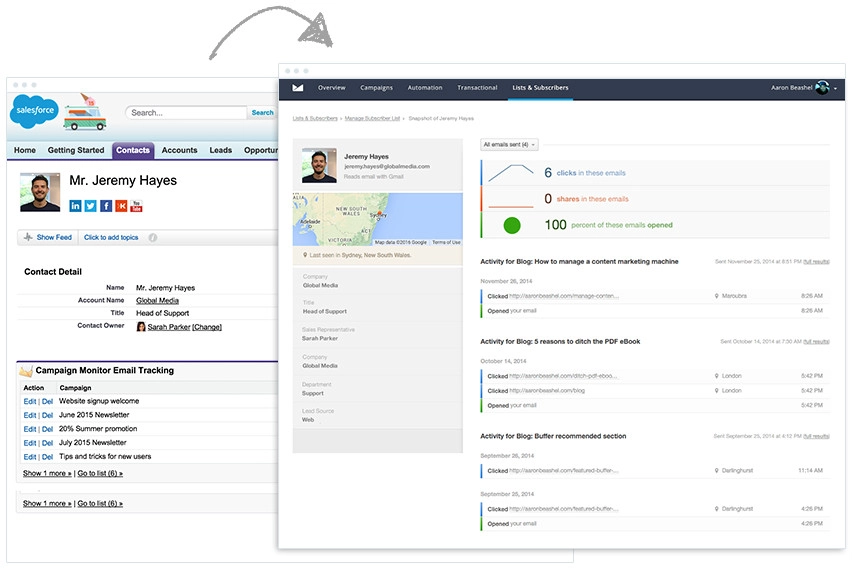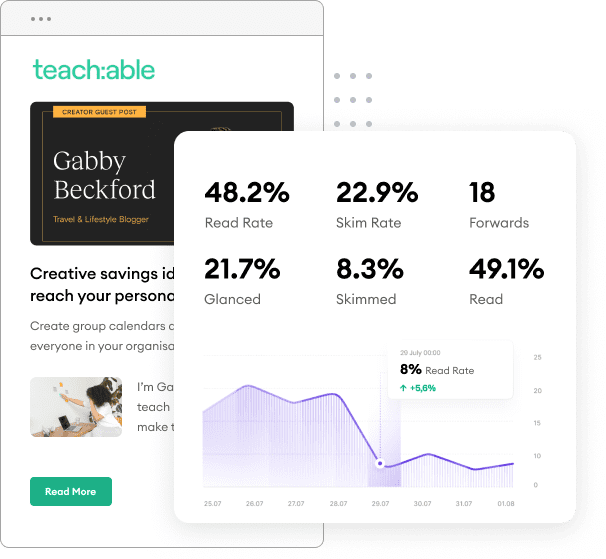It is easy to wonder—what is the future of email marketing? How can I improve my well-oiled email marketing strategy? The most recent advancement in email marketing strategy that every marketing manager should consider is the use of dynamic content — also known as personalized content — in their email marketing.
Dynamic content is the term used to describe sending out one email campaign to your entire contact list, but being able to customize and tailor each individual email by using subscriber data that is unique to each individual on your email list.
This information ranges and the ability to collect useful subscriber data is increasing in capabilities regularly. As of now, you can think of information like a first name, last product, or recent products purchased, gender, location, or other things that are easily collected.
A study cited by Campaign Monitor showed that emails with personalized subject lines are 26.7% more likely to be opened than those without—further, emails that leverage personalization also generate revenue that is 5.7 times higher than emails without.
The key is being relevant and meaningful to your subscribers, and believe it or not, in the world of massive amounts of email every day, being able to appeal to the unique qualities and interests of subscribers can be enough to stand out.
So what do you do with this information if you want to create an actionable strategy? There are a lot of things you can do with dynamic content and we are going to discuss a few today!
This may seem simple, but so many businesses still do not use first names in their email marketing. Using the subscriber’s name is one of the simplest and most effective ways to add a touch of personalization to email content.
The main reason it is so effective is that the subject line, headline, or initial body content where the name is placed is one of the most prominent positions on the email. It is also effective because people just like things to be personalized with their names! It is such a simple touch that can be enough to catch a subscriber’s attention in their busy inbox.
According to a Kissmetrics presentation, email campaigns that use a subscriber’s first name are 26% more likely to be opened!
Any decent email marketer knows that the subject line is really the one chance to grab a subscriber’s attention. This is not to say that the content of your email doesn’t matter—but if you want people to see the beautiful email you have created and the important content you have to share, then you need them to click and actually OPEN your email.
Think about scrolling through your inbox in the morning, getting rid of all of the junk that you don’t actually want to open, and opening the messages you do. The reason you chose to open any emails that are not professional or personal is that the subject line grabs your attention or appeals to your personal interest. Keep this in mind as you are writing subject lines that can be made dynamic and customized for your subscribers.
Focusing on subscriber preferences is another way to incorporate dynamic content and show that you care about individual interests. Rather than simply focusing on past purchases, use past purchases to inform future purchases of products or services that you think subscribers will like.
Use the “based on this purchase” method to predict other items or services that your list-members will like. Also, keep in mind that you can suggest future purchases based on other demographics that you have.
The image below demonstrates one example of how StitchFix collects data on its customers/subscribers. By knowing their personalized style they are able to more effectively market and craft emails that appeal to specific individuals.
Image Source
Going beyond text recommendations, you can appeal to various subscriber groups using imagery alone. The demographic and subscriber information that you have can help to target what kind of imagery you think might be most effective.
Not only does this add a touch of personalization, but imagery can also help to increase your email campaign’s click-through rate. A study by Campaign Monitor showed that by customizing images for a multi-country subscriber database, they were able to increase clickthrough rate by 29%. This is just one example of the impacts that dynamic content can have on your campaign.

Image Source
The above image not only showcases a personalized name in the copy but also a good example of how imagery can be swapped out and customized based on past purchases or interests.
One way to use dynamic content is to re-engage customers who have already interacted with your brand. A friendly reminder with personalized content can be enough to tip subscribers who’ve not interacted in a while back onto your radar.
Within these re-engagement campaigns, you should still consider personalized features and utilizing dynamic aspects to not only bring attention back to your brand but also to show subscribers that you care about their interests. We know from other marketing efforts that re-engagement is one of the most effective strategies to implement, so you should definitely consider incorporating it into your dynamic content efforts as well.
Email marketing can be taken to the next level with dynamic content that is not only customized to your segmentation but also customized for your individual subscribers. By incorporating the use of first names, a stand-out (dynamic) subject line, subscriber preferences, imagery, and re-engagement efforts, you will be well on your way to effectively using dynamic content in your email marketing efforts.
Have you tried implementing dynamic content into your email marketing campaigns? What is your biggest concern in trying to customize and tailor emails to your subscribers?
